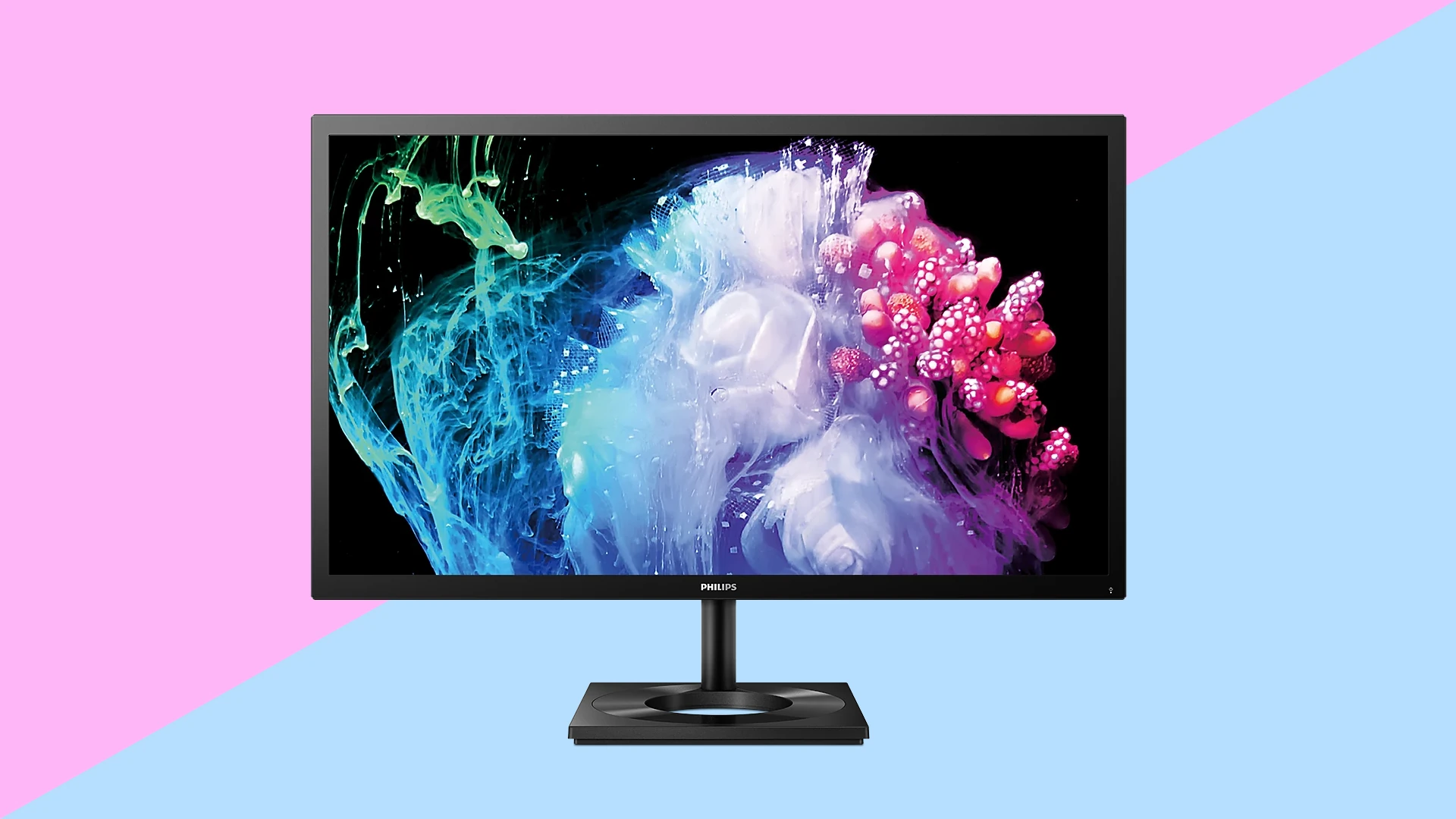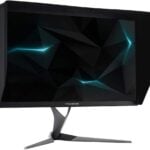Gaming monitors have become a key part of any gamer’s setup. They offer features that regular monitors don’t have, like fast refresh rates and quick response times. These features help games look smooth and respond quickly to your actions.
When buying a gaming monitor, look at the refresh rate, response time, and resolution. Refresh rate tells you how many times per second the screen updates. Response time measures how fast pixels change color. Resolution affects how sharp the image looks. Higher numbers usually mean better performance for all three.
We also suggest checking the panel type. TN panels are fast but have poor viewing angles. IPS panels show better colors but might be slower. VA panels offer good contrast but can have motion blur. We spent weeks testing dozens of gaming monitors to find the best options for different needs and budgets.
Best Gaming Monitors
We’ve tested dozens of monitors to find the ones that truly shine for gaming. Our picks balance crisp visuals, smooth gameplay, and fair prices to help you get the most from your games. Whether you play fast-paced shooters or immersive RPGs, the right screen makes all the difference.
Amazon Basics 27-Inch Gaming Monitor
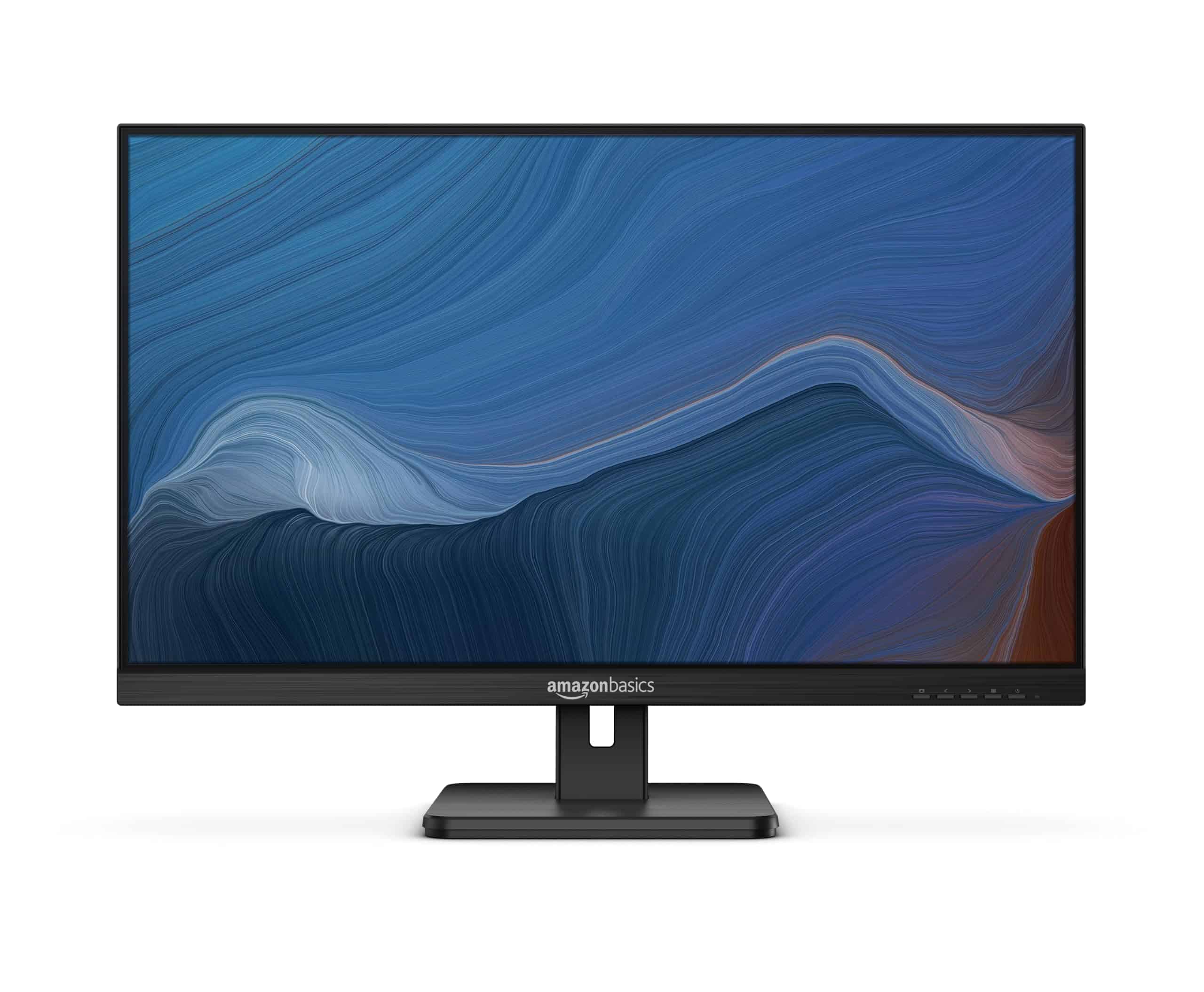
This affordable 27-inch IPS monitor offers excellent value for casual gamers with its decent refresh rate and multiple connectivity options.
Pros
- Full HD resolution with wide viewing angles
- Multiple input ports including HDMI, DisplayPort and VGA
- Built-in speakers eliminate need for external audio
Cons
- 75Hz refresh rate may not satisfy competitive gamers
- Stand only tilts with no height adjustment
- Basic speakers lack robust sound quality
We recently tested the Amazon Basics 27-inch monitor and were impressed by its performance for the price point. The 1080p resolution delivers sharp images on the spacious 27-inch screen. Colors appear vivid and accurate thanks to the IPS panel technology, which also ensures clear visibility from virtually any angle in the room.
Setting up was straightforward with the included stand. The monitor connected easily to our gaming PC using the provided HDMI cable. We appreciated having other connection options too, including DisplayPort and VGA for flexibility with different devices. The built-in speakers came in handy for casual use, though serious gamers will want dedicated audio.
The 75Hz refresh rate provides a noticeable improvement over standard 60Hz monitors when playing fast-paced games. While not as smooth as 144Hz gaming displays, it strikes a good balance for casual gaming. We found the tilt-adjustable stand adequate but missed height adjustment during longer gaming sessions. For budget-conscious gamers who don’t need ultra-competitive refresh rates, this monitor delivers solid performance without breaking the bank.
LG UltraGear 32″ Curved Gaming Monitor
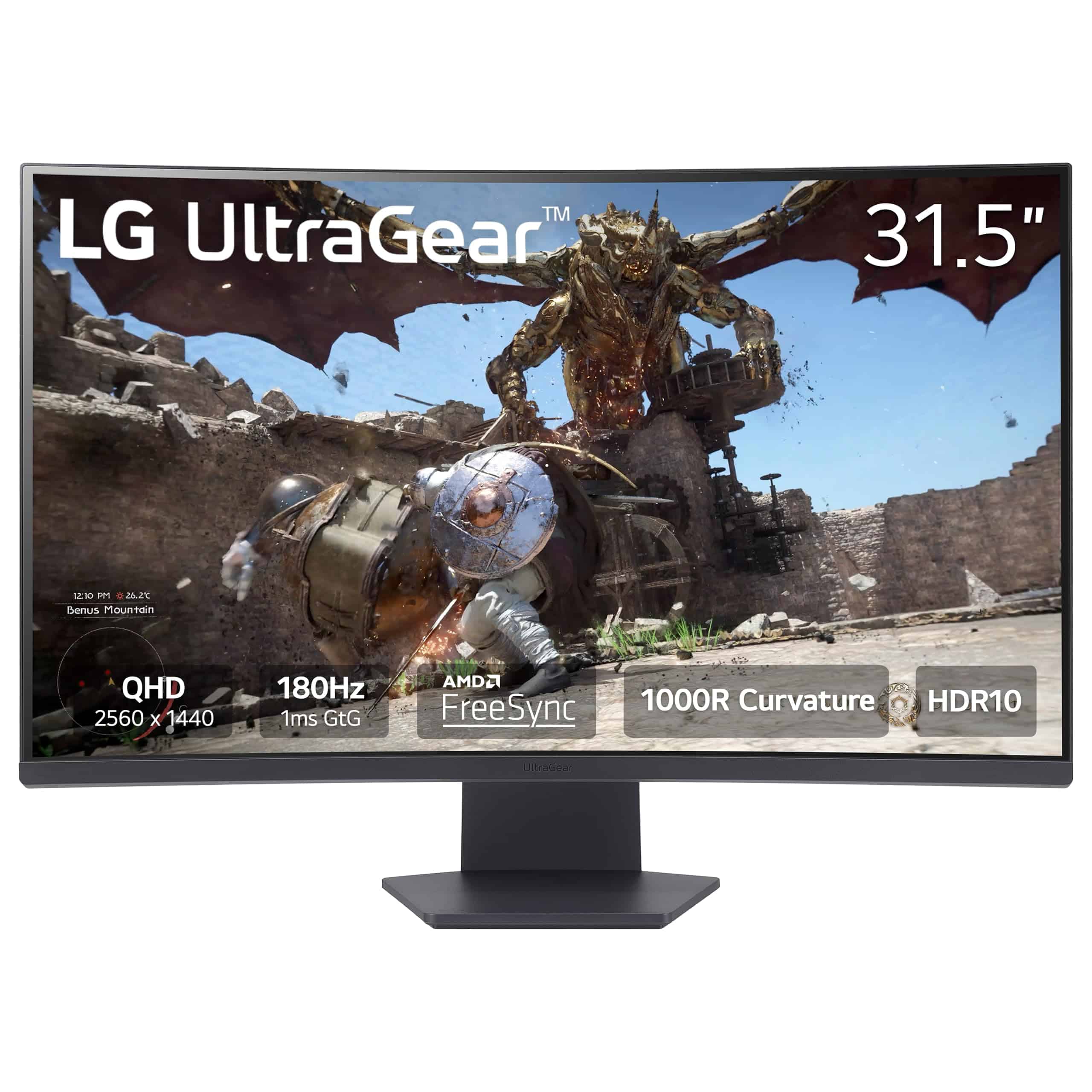
The LG UltraGear curved gaming monitor delivers exceptional performance with its 180Hz refresh rate and immersive 1000R curve, making it a top choice for serious gamers looking to upgrade their setup.
Pros
- Smooth 180Hz refresh rate with 1ms response time
- Immersive 1000R curved screen pulls you into the action
- Sharp QHD resolution with excellent color reproduction
Cons
- Black contrast could be better for dark scenes
- Slight learning curve when adjusting to curved display
- Included cables aren’t optimal for maximum performance
We recently spent some time testing this 32-inch LG UltraGear curved gaming monitor, and it’s definitely a game-changer. The first thing we noticed was how the steep 1000R curve wrapped around our field of view. This design isn’t just for looks – it actually helps create a more immersive gaming experience by filling more of your peripheral vision.
The 180Hz refresh rate paired with the 1ms response time makes a huge difference in fast-paced games. Playing first-person shooters, we noticed much smoother motion and less blur during quick movements. The AMD FreeSync technology eliminated screen tearing completely, which was a major upgrade from our previous monitor.
Color reproduction is another strong point with up to 99% sRGB coverage and HDR10 support. Games look vibrant and rich on this display. We particularly appreciated the gaming-specific features like Black Stabilizer which helped us spot enemies hiding in shadows, and the FPS counter that let us monitor performance in real-time. The nearly borderless design also gives the monitor a premium look that fits nicely on any desk.
Sceptre 24.5″ Curved Gaming Monitor
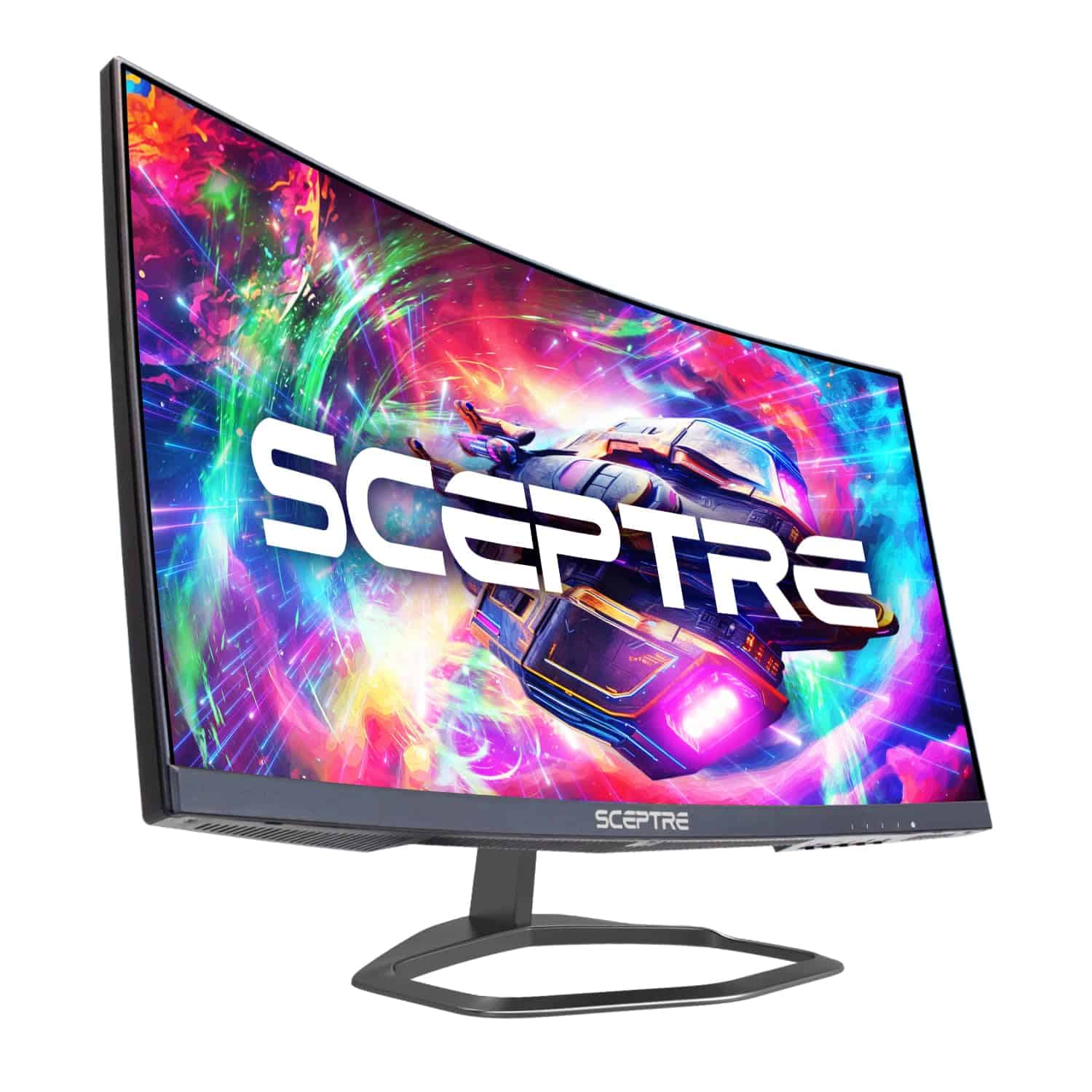
The Sceptre Curved Gaming Monitor delivers impressive performance with its 240Hz refresh rate and immersive curve, making it an excellent value for competitive gamers on a budget.
Pros
- Lightning-fast 240Hz refresh rate eliminates motion blur
- Comfortable 1500R curve enhances immersion
- Multiple connectivity options with dual HDMI and DisplayPort
Cons
- Built-in speakers lack bass and volume
- 1080p resolution might disappoint resolution-focused users
- On-screen display menu feels outdated
We recently tested the Sceptre 24.5″ curved gaming monitor in our setup, and it quickly became our go-to screen for fast-paced games. The 240Hz refresh rate isn’t just marketing hype—we noticed significantly smoother gameplay in competitive titles like Valorant and Apex Legends. The 1ms response time means there’s virtually no ghosting when tracking fast-moving targets.
The 1500R curve might seem subtle at first glance, but after a few hours of use, we appreciated how it wrapped our peripheral vision. This curved design creates a more natural viewing angle that reduced eye strain during longer gaming sessions. The matte screen finish also does a great job minimizing reflections, even when gaming near windows.
Build quality surprised us for the price point. The monitor feels solid with a stable stand that doesn’t wobble during intense gaming moments. We connected our gaming PC using one of the DisplayPorts for the full 240Hz experience, while having a console connected via HDMI simultaneously. AMD FreeSync Premium worked flawlessly to eliminate screen tearing with compatible graphics cards. Though the built-in speakers work in a pinch, you’ll want dedicated audio for the best experience—they lack depth for immersive gaming sounds.
Samsung Odyssey G55C 32″ Curved Gaming Monitor
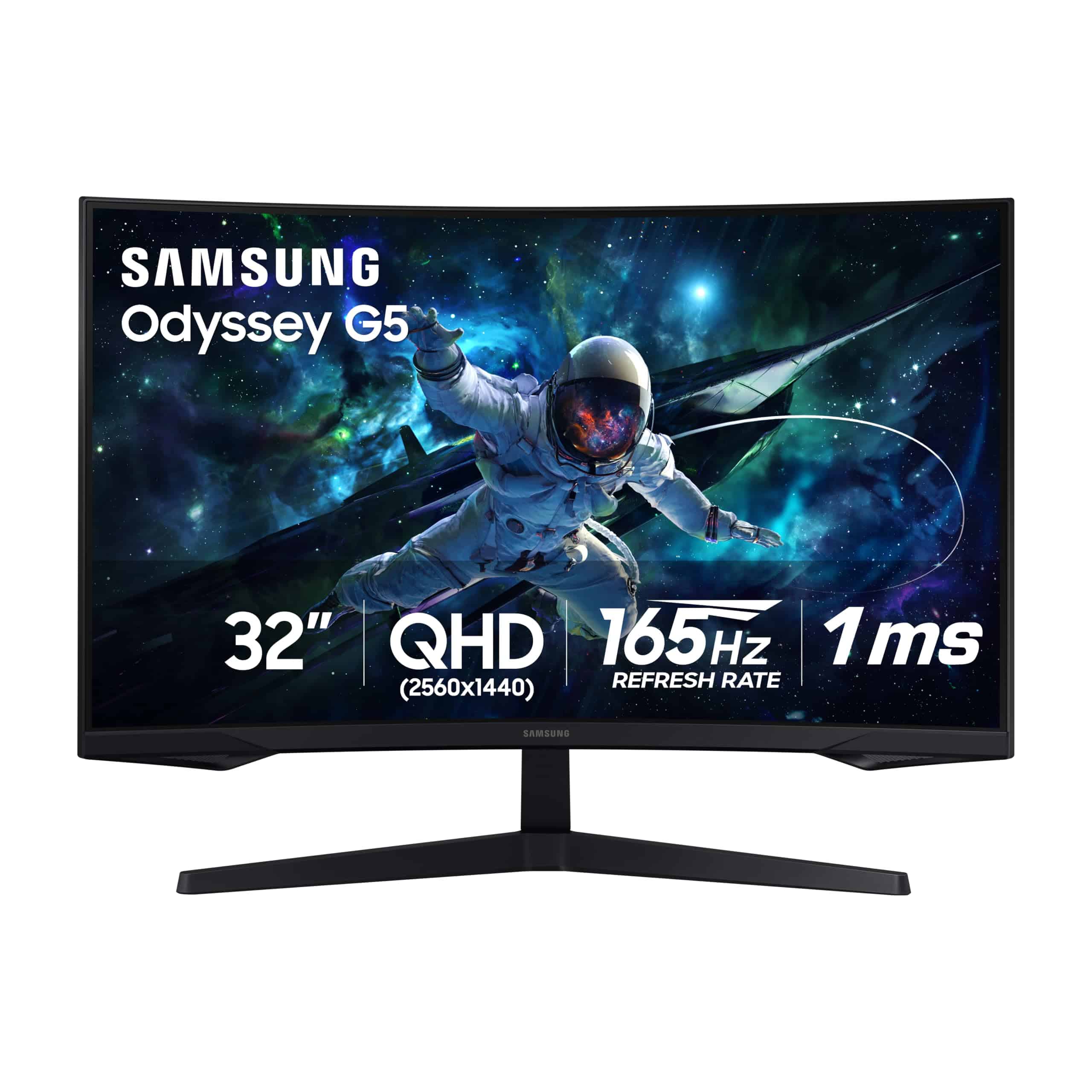
This curved gaming monitor delivers impressive performance with its QHD resolution and fast refresh rate, making it an excellent choice for gamers who want immersion without breaking the bank.
Pros
- Immersive 1000R curved screen wraps your field of vision
- Smooth gameplay with 165Hz refresh rate and 1ms response time
- QHD resolution provides sharp, detailed images
Cons
- Text clarity requires some settings adjustments
- Brightness could be better for HDR content
- Stand has limited adjustment options
We recently tested the Samsung Odyssey G55C, and it quickly became clear why this monitor has earned such popularity. The 32-inch curved display really pulls you into games. Its 1000R curvature matches the human eye’s natural field of view, which helped us feel more connected to the action during intense gaming sessions.
The QHD resolution (2560 x 1440) strikes a perfect balance between visual quality and performance demands. Games look crisp and detailed without requiring a top-tier graphics card. We noticed significantly more detail compared to 1080p monitors, especially in games with rich environments.
Response time and refresh rate make a real difference in competitive gameplay. The 165Hz refresh rate paired with the 1ms response time meant we could react faster in first-person shooters. AMD FreeSync technology eliminated screen tearing completely during our tests. The Eye Saver Mode came in handy during marathon gaming sessions by reducing blue light, and we didn’t experience the usual eye fatigue we get with other monitors.
Setting up the right brightness and sharpness took some tweaking to get text looking crisp. The HDR10 support adds nice color depth to games, though it’s not as impactful as higher-end HDR implementations. For the price point, we found the overall package offers tremendous value, especially for gamers upgrading from older 1080p displays.
Sceptre 27-inch Gaming Monitor
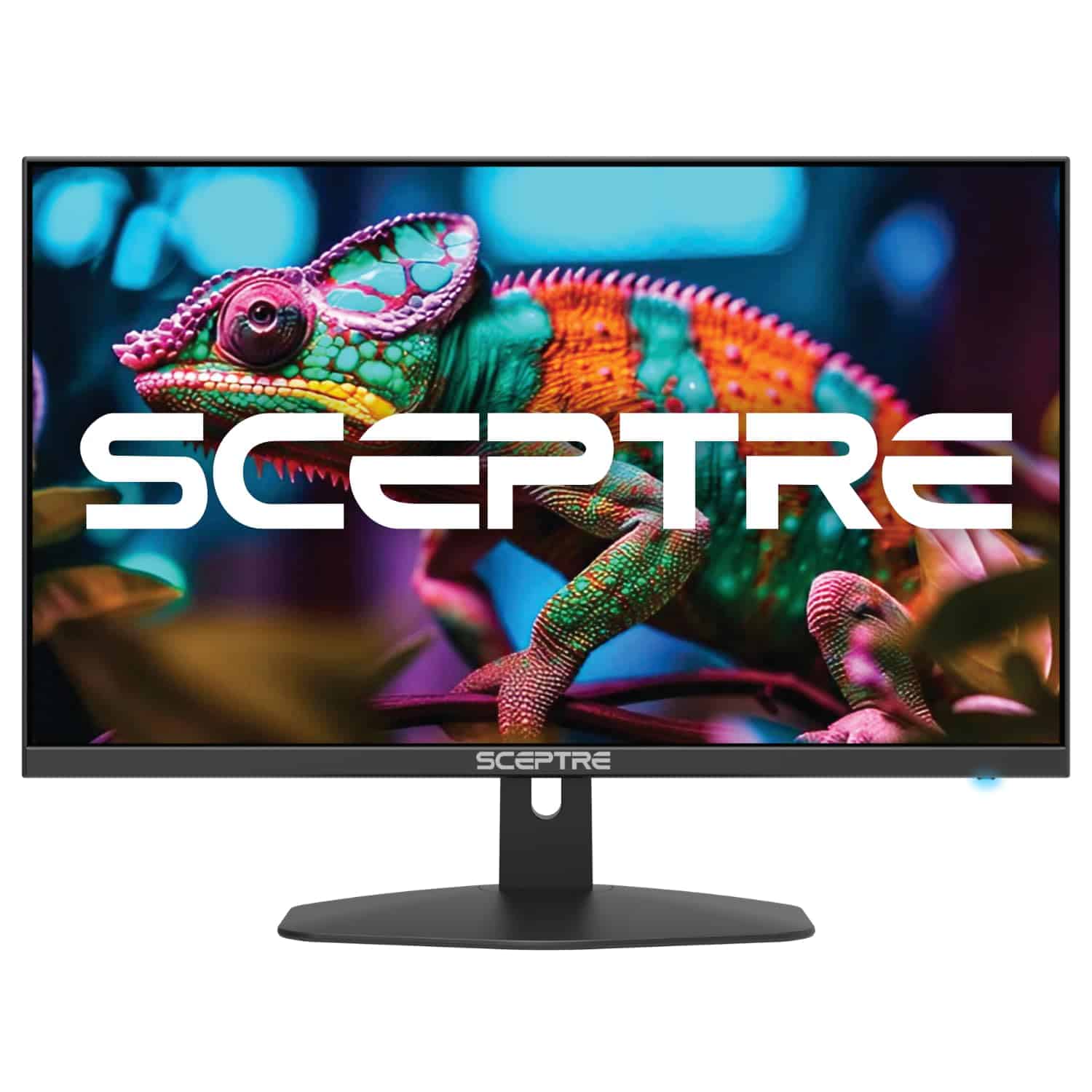
The Sceptre 27-inch gaming monitor offers excellent value with its smooth 100Hz refresh rate and vibrant display that works well for both casual gamers and everyday users.
Pros
- Impressive 100Hz refresh rate with minimal input lag
- Vibrant colors with 100% sRGB color gamut
- Built-in speakers save desk space
Cons
- 1080p resolution could be higher for the screen size
- Awkwardly designed power button
- Stand has limited adjustment options
We recently tested this Sceptre monitor and were pleasantly surprised by its performance for the price. The 100Hz refresh rate makes a noticeable difference when gaming, providing smoother motion than standard 60Hz displays. Games look fluid, and we experienced no screen tearing thanks to the AMD FreeSync support.
Colors pop nicely on this screen with its 100% sRGB color gamut. We found this especially useful when watching movies or playing colorful games like Fortnite. The monitor’s Blue Light Shift feature also helped reduce eye strain during our longer gaming sessions, which was a welcome addition.
Connectivity is straightforward with two HDMI ports and one DisplayPort. Setting up was simple – we had it unpacked and running in under five minutes. The built-in speakers aren’t going to replace a good headset or external speakers, but they’re perfectly adequate for casual use and video calls. For gamers on a budget who want a decent-sized display with good performance, this Sceptre monitor delivers solid value without breaking the bank.
Amazon Basics 27″ Gaming Monitor
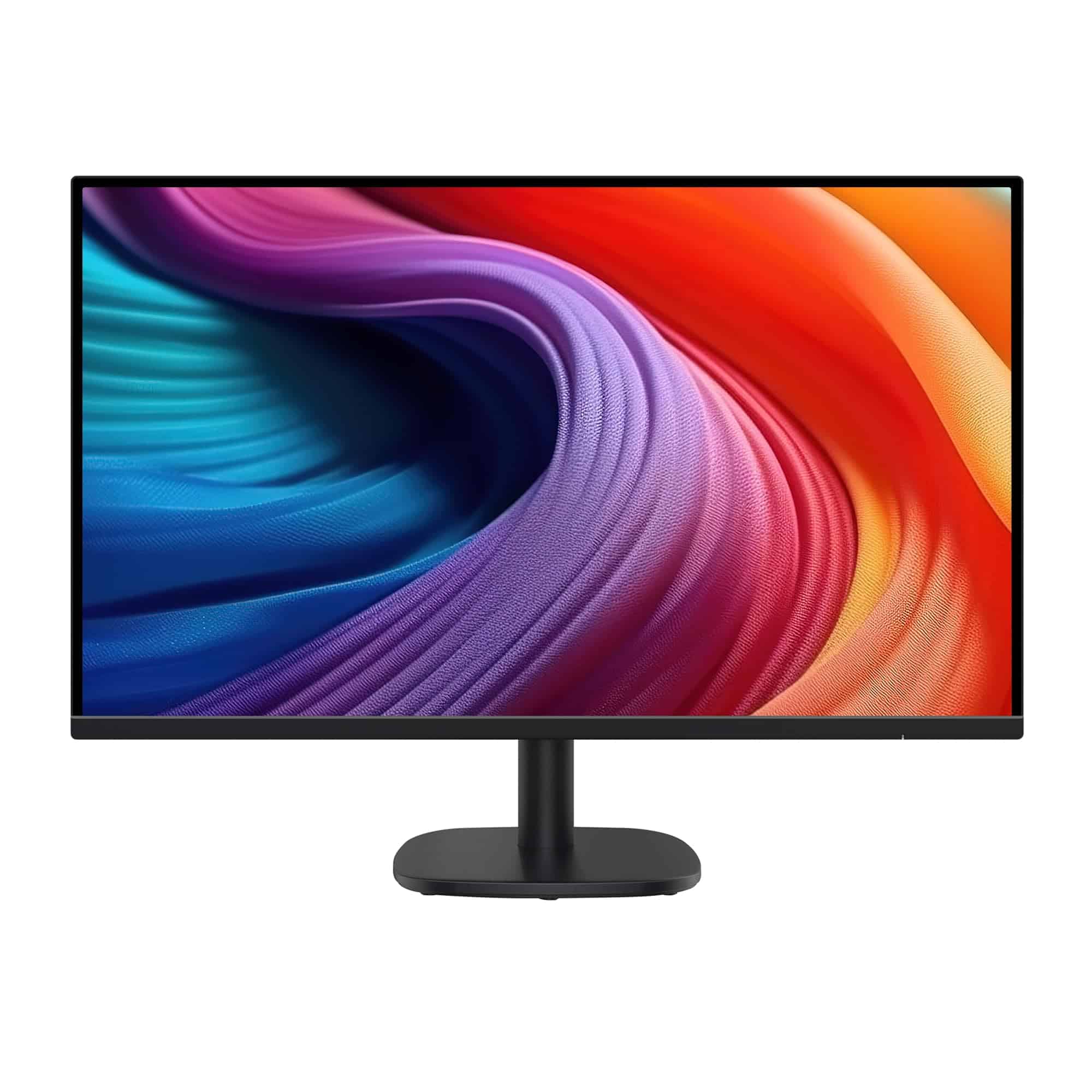
This budget-friendly monitor offers impressive features for everyday gaming with good image quality and useful extras that make it worth considering.
Pros
- Crystal clear 1080p resolution with vibrant colors
- Built-in speakers eliminate need for external audio
- Four USB ports for easy peripheral connections
Cons
- 4ms response time isn’t ideal for competitive gaming
- Some units have quality control issues
- Stand has limited adjustment options
We recently tested the Amazon Basics 27″ monitor and were pleasantly surprised by what it offers at this price point. The setup was quick—just remove the protective film (an important step many users miss), attach the base, and plug it in. Within minutes, we were enjoying the crisp 1080p display that brings games to life with good color accuracy.
The monitor’s 100Hz refresh rate provides smoother gameplay than standard 60Hz displays. While testing Fortnite and Minecraft, we noticed less motion blur during fast-paced action. The built-in speakers deliver decent sound quality that works for casual gaming, though serious gamers will still want headphones for immersive experiences.
One feature we really appreciate is the four USB ports on the back. This helps clean up desk space by connecting our keyboard, mouse, and other peripherals directly to the monitor instead of running cables to our PC. The VESA mounting compatibility also gives flexibility for those who prefer monitor arms. Overall, this monitor hits a sweet spot for budget gamers who need something reliable without breaking the bank.
Samsung Odyssey G3 Gaming Monitor
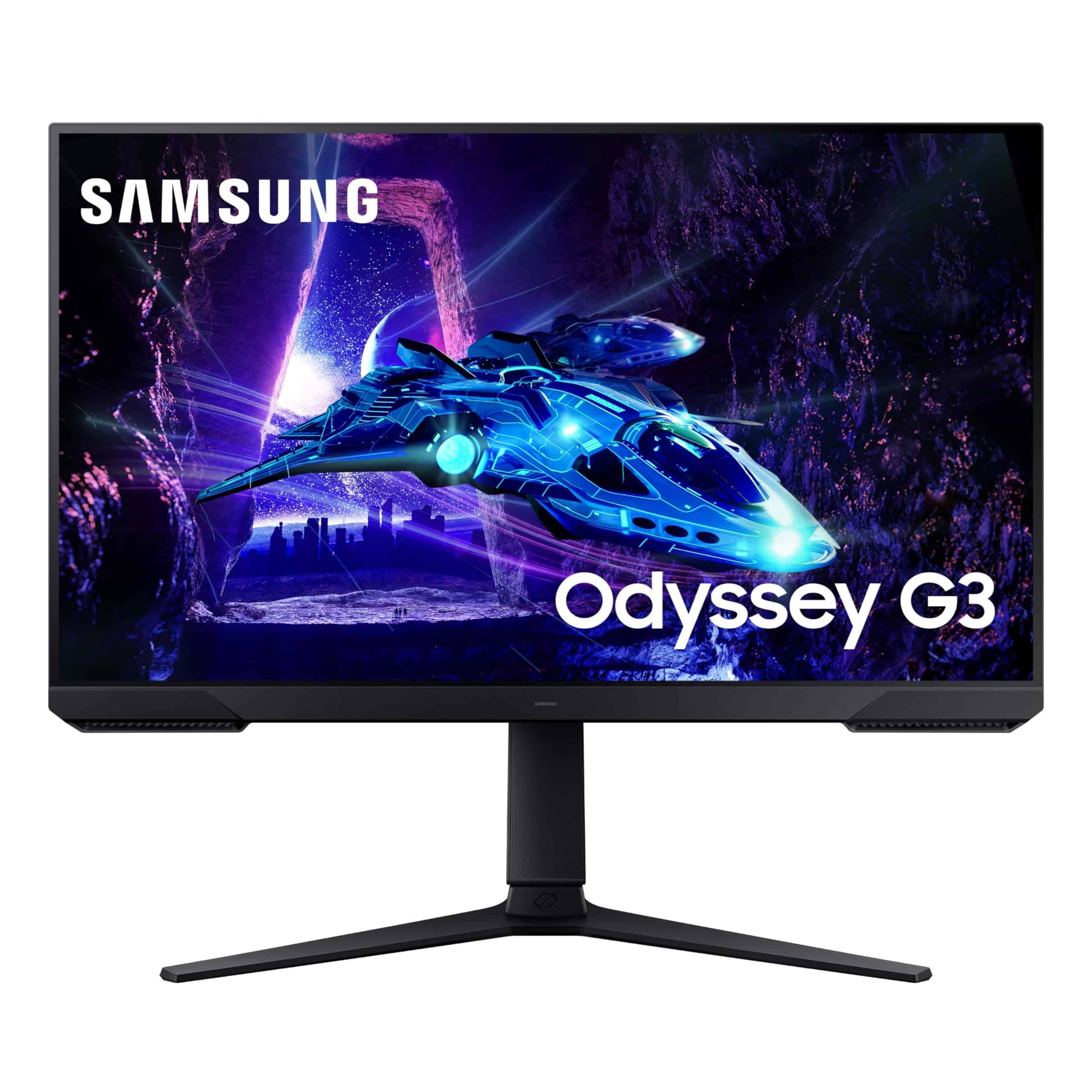
The Samsung Odyssey G3 delivers outstanding gaming performance with its 180Hz refresh rate and fast response time, making it an excellent choice for competitive gamers who need speed without breaking the bank.
Pros
- Lightning-fast 180Hz refresh rate with minimal motion blur
- Highly adjustable stand for perfect ergonomics
- Helpful gaming features like Black Equalizer and Virtual Aim Point
Cons
- Limited to 1080p resolution
- Stand takes up significant desk space
- No built-in speakers
We tested the Samsung Odyssey G3 27-inch gaming monitor and were impressed by how smooth gameplay felt. The 180Hz refresh rate makes a real difference when playing fast-paced games. Everything from first-person shooters to racing games looked fluid and clear, with almost no motion blur thanks to the 1ms response time.
Setting up the monitor was straightforward. The stand offers great flexibility – we could adjust the height, tilt, swivel, and even rotate to portrait mode. This level of adjustability isn’t common at this price point. The three-sided borderless design also looks clean on our desk and works great for multi-monitor setups.
For competitive gaming, the special features really shine. The Black Equalizer helped us spot enemies hiding in dark corners, and the Virtual Aim Point crosshair gave us better accuracy in shooters. AMD FreeSync kept games tear-free even during intense action. We appreciated the Eye Saver Mode during long gaming sessions – our eyes felt less strained after hours of use. While it’s limited to 1080p resolution, the image quality is still sharp and vibrant for gaming at this screen size.
Sceptre 30″ Curved Gaming Monitor
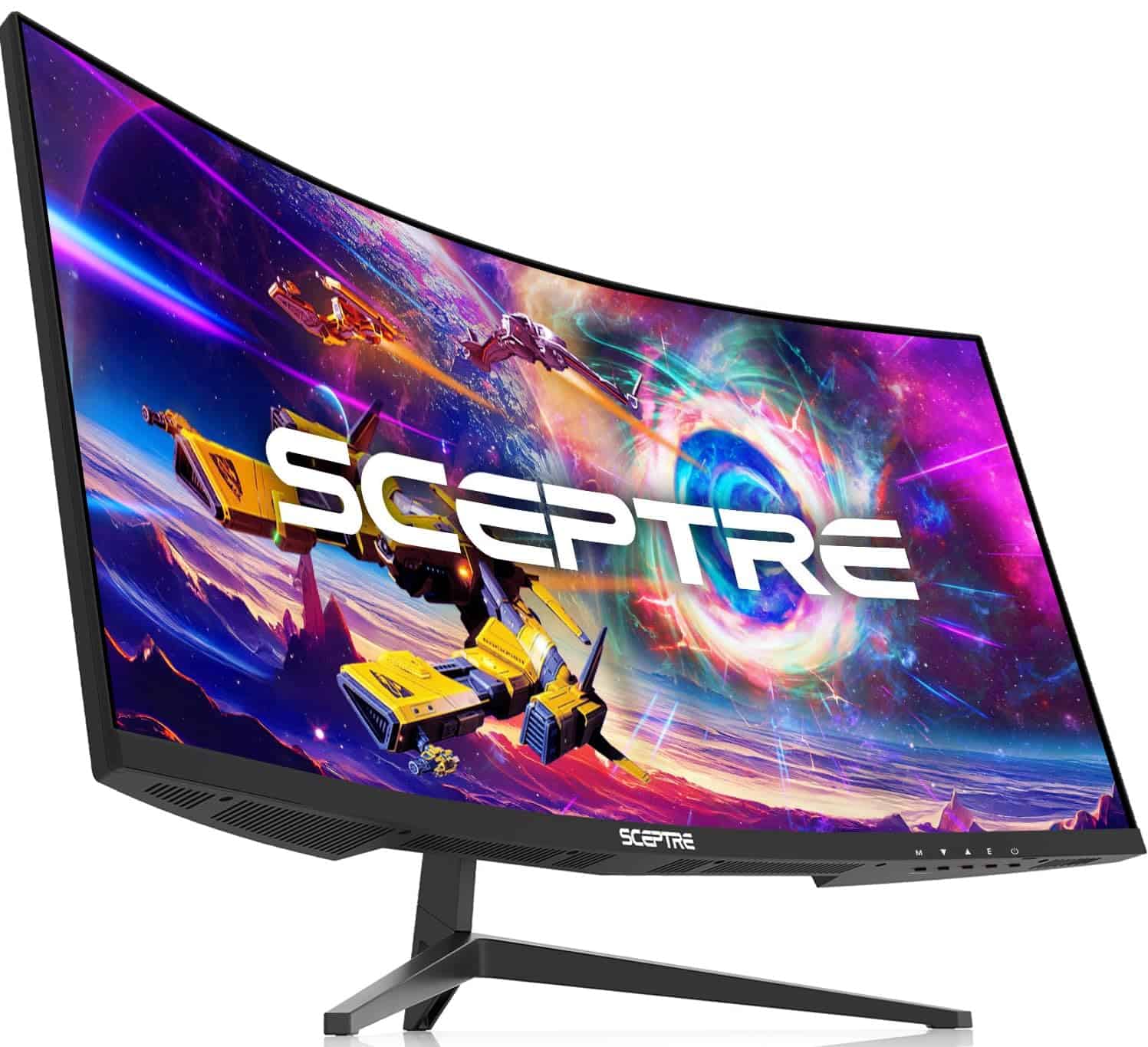
This ultrawide curved monitor offers impressive gaming performance with up to 200Hz refresh rate at a price point that won’t break the bank.
Pros
- Smooth gameplay with up to 200Hz refresh rate via DisplayPort
- Immersive curved ultrawide screen reduces eye strain
- Built-in speakers eliminate need for external audio
Cons
- 1080p resolution may not satisfy pixel-density purists
- Size can overwhelm smaller desk setups
- Menu controls feel somewhat clunky
We recently tested the Sceptre 30″ curved gaming monitor in our office gaming setup, and the ultrawide 21:9 aspect ratio immediately changed how we experienced our favorite games. The curved design pulled us into the action, creating a more natural field of view compared to flat screens we’ve used before. Our team especially noticed how the curve reduced eye movement during fast-paced games.
The 200Hz refresh rate through DisplayPort connection is this monitor’s standout feature. Fast-moving objects stayed crystal clear with minimal motion blur during our Apex Legends sessions. AMD FreeSync technology worked perfectly with our AMD graphics card, eliminating screen tearing completely. The difference was night and day compared to standard 60Hz displays.
Setting up was straightforward with multiple connection options including three HDMI ports and one DisplayPort. The built-in speakers surprised us with decent audio quality for casual use, though serious gamers will still want dedicated headphones. The blue light filter was a welcome feature during our longer gaming sessions, noticeably reducing eye fatigue. At this price point, the value is excellent for anyone wanting to upgrade their gaming setup without spending premium dollars.
ASUS TUF Gaming Monitor

This 27-inch WQHD gaming monitor offers exceptional performance with its 170Hz refresh rate and G-SYNC compatibility, making it an excellent choice for serious gamers wanting smooth gameplay without breaking the bank.
Pros
- Crystal clear 1440p resolution with vibrant IPS display
- Ultra-smooth 170Hz refresh rate with minimal motion blur
- Excellent eye care features for comfortable extended sessions
Cons
- Some IPS glow visible in very dark scenes
- Built-in speakers are basic at best
- HDR performance is limited compared to higher-end models
After testing the ASUS TUF Gaming VG27AQ1A for several weeks, we’ve been impressed by its performance. The 2560 x 1440 resolution hits a sweet spot between visual clarity and gaming performance. Text appears sharp, and games show impressive detail without requiring an ultra-powerful GPU.
The 170Hz refresh rate makes a real difference in fast-paced games. We noticed much smoother motion in first-person shooters compared to standard 60Hz displays. The 1ms response time and ELMB technology work as advertised, keeping ghosting to a minimum even during intense action sequences.
Colors look accurate right out of the box, though we did make some minor adjustments to get them just right. The IPS panel offers good viewing angles, which is handy when friends gather to watch gameplay. We also appreciate the eye care features – after long gaming sessions, we experienced noticeably less eye strain than with older monitors.
The physical design feels sturdy with a good range of tilt and height adjustments. Setting up was simple with two HDMI ports and DisplayPort giving us plenty of connection options. The on-screen display menu is easy to navigate, letting us quickly switch between different gaming presets for various game types.
At this price point, it’s hard to find a better mix of resolution, refresh rate, and image quality. While not perfect, this monitor delivers where it counts for most gamers.
ASUS ROG Swift 32″ 4K OLED
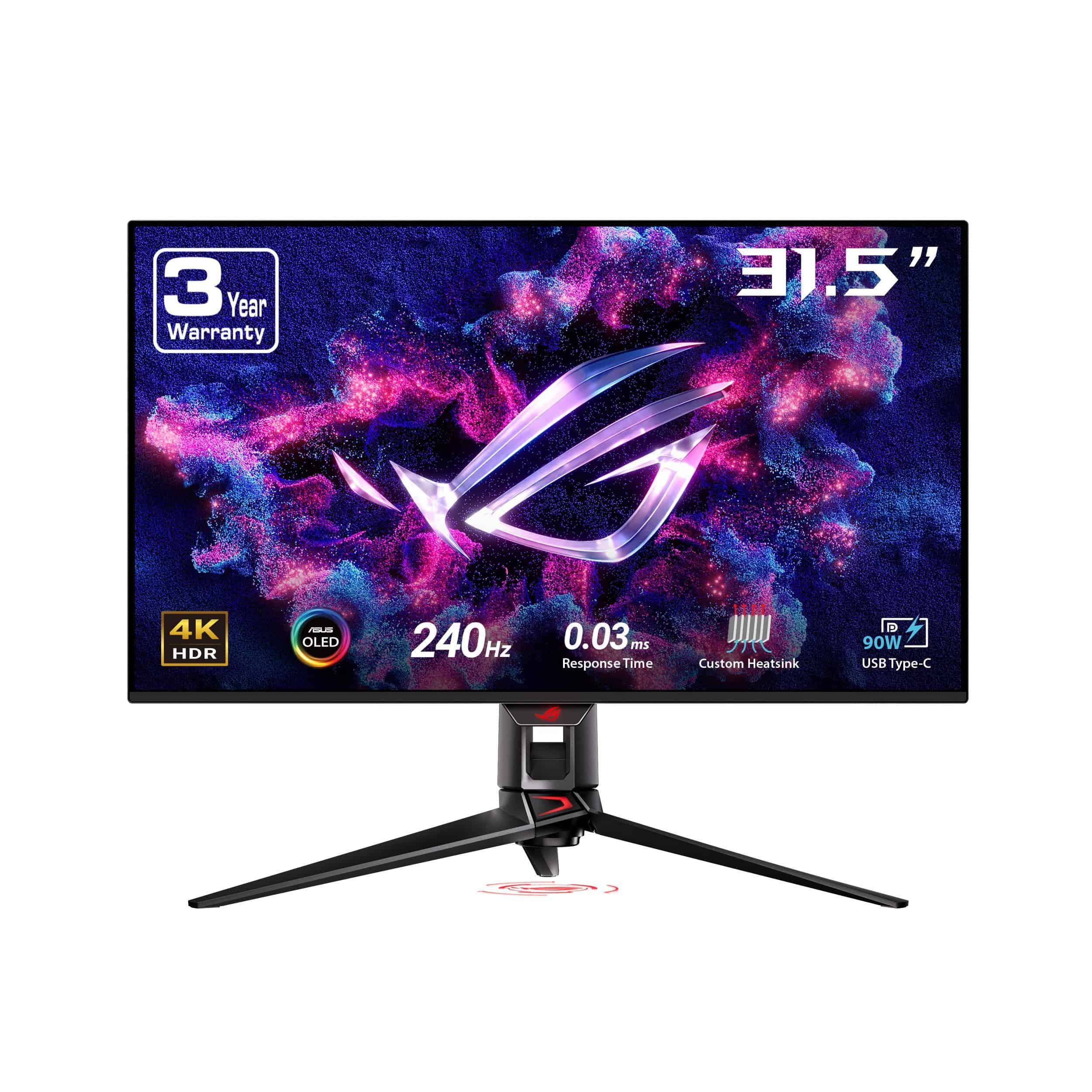
This premium gaming monitor delivers exceptional visuals with its QD-OLED panel and 240Hz refresh rate, making it worth every penny for serious gamers.
Pros
- Stunning 4K picture quality with deep blacks
- Super smooth 240Hz refresh rate with near-instant response time
- Effective cooling system to prevent burn-in
Cons
- High price point
- Takes up significant desk space
- Power consumption can be high during intense use
We recently tested the ASUS ROG Swift 32″ 4K OLED gaming monitor and were blown away by its performance. The QD-OLED panel creates colors that pop like nothing we’ve seen before. Games like Cyberpunk 2077 and Red Dead Redemption 2 looked absolutely incredible, with dark scenes showing detail we didn’t know existed.
The 240Hz refresh rate makes a huge difference in fast-paced games. Playing Counter-Strike and Apex Legends, we noticed significantly less blur during quick movements. The 0.03ms response time eliminated ghosting completely, giving us a clear competitive edge. This monitor doesn’t just look good—it actually improved our gaming performance.
Heat management is a standout feature here. The custom heatsink and graphene film kept the monitor cool even during our 6-hour weekend gaming sessions. We appreciated the OLED Care functions in the DisplayWidget Center, which gave us easy control over settings to extend the panel’s life. The uniform brightness option proved useful for maintaining consistent image quality across the entire screen.
Dell 34″ Curved Gaming Monitor
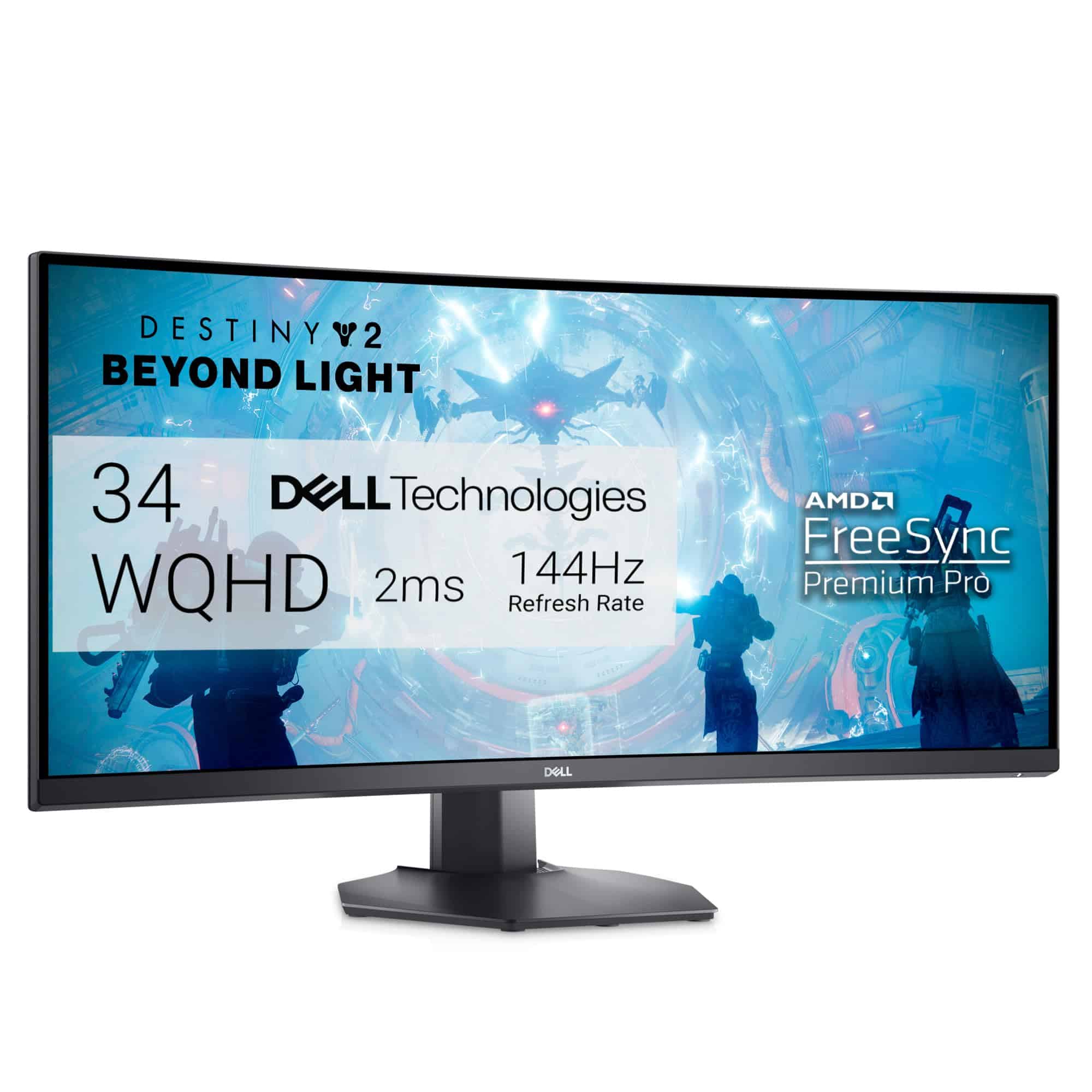
This ultra-wide curved monitor delivers stunning visuals and immersive gameplay that makes it worth every penny for serious gamers.
Pros
- Immersive 1800R curved screen with minimal bezels
- Crisp WQHD resolution (3440×1440) with great color accuracy
- Smooth 144Hz refresh rate with AMD FreeSync Premium
Cons
- Takes up significant desk space
- VA panel has some viewing angle limitations
- Price point is higher than standard gaming monitors
We recently spent time testing the Dell S3422DWG, and it’s changed our gaming setup completely. The 34-inch curved display wraps around your field of vision, pulling you into games in a way flat screens simply can’t match. Games like racing simulators and open-world adventures feel more lifelike with the expanded peripheral vision.
The monitor’s image quality impressed us right away. Colors pop with surprising vibrancy for a VA panel, and the WQHD resolution provides sharp details across the ultra-wide screen. Dark scenes look fantastic with deep blacks that don’t wash out. We noticed the 144Hz refresh rate makes a real difference in fast-paced games, with smooth motion that helps track enemies in competitive shooters.
Build quality feels solid, with a sturdy stand that adjusts for height and tilt. We appreciate the thoughtful design touches like the downward-facing ambient light for night gaming sessions and the cooling vents that keep performance stable. Cable management is simple, and the four USB ports came in handy for our accessories. For anyone upgrading from a standard monitor, be aware that the ultra-wide aspect ratio might need some getting used to, but once you adjust, it’s hard to go back to regular screens.
Acer Nitro 27″ Gaming Monitor
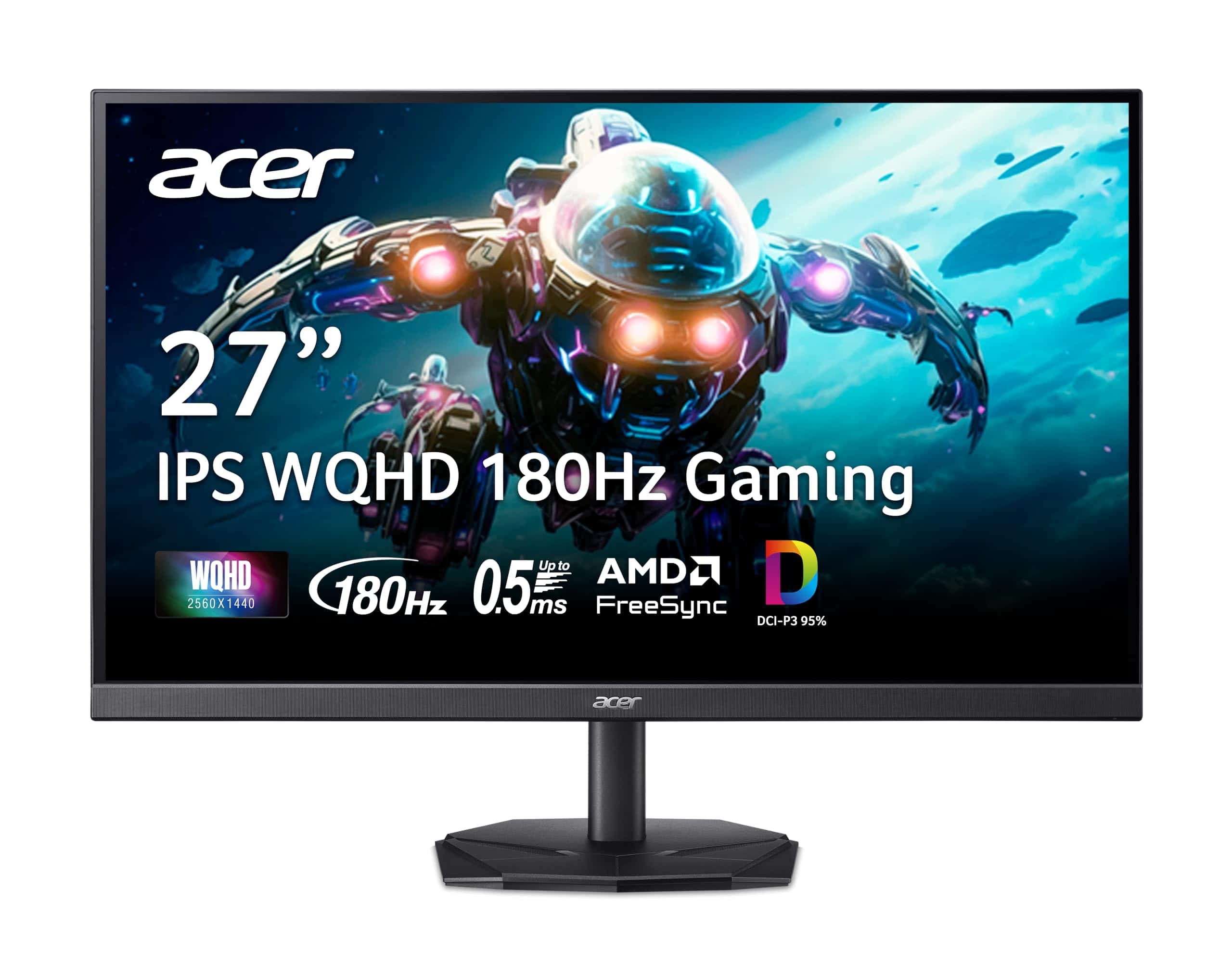
We believe the Acer Nitro 27″ is worth every penny for serious gamers seeking smooth gameplay with stunning visuals at 1440p resolution.
Pros
- Incredibly smooth 180Hz refresh rate with minimal motion blur
- Sharp WQHD resolution with vibrant color accuracy (95% DCI-P3)
- AMD FreeSync eliminates screen tearing completely
Cons
- Stand has limited adjustment options
- Factory settings need tweaking for best picture
- Glossy screen can show reflections in bright rooms
After testing this monitor for several weeks, we’re impressed by how it transforms gaming sessions. Games look crisp and detailed at 1440p resolution, and the colors pop thanks to the HDR 10 support. The difference is especially noticeable in games with vibrant environments or dark scenes where the contrast really shines.
The zero-frame design makes this monitor look sleek on any desk setup. When playing fast-paced shooters, the 0.5ms response time proved its worth – no ghosting or smearing even during intense firefights. We plugged it in via DisplayPort to get the full 180Hz refresh rate, and the difference from standard 60Hz is night and day.
Setting up the monitor was straightforward, though we recommend playing with the picture modes rather than sticking with the default eco setting. The IPS panel offers great viewing angles, so everyone can see the screen clearly even when gathered around for multiplayer sessions. For competitive gamers who don’t want to spend a fortune, this Acer Nitro hits the sweet spot between performance and price.
AOC Gaming C27G2Z
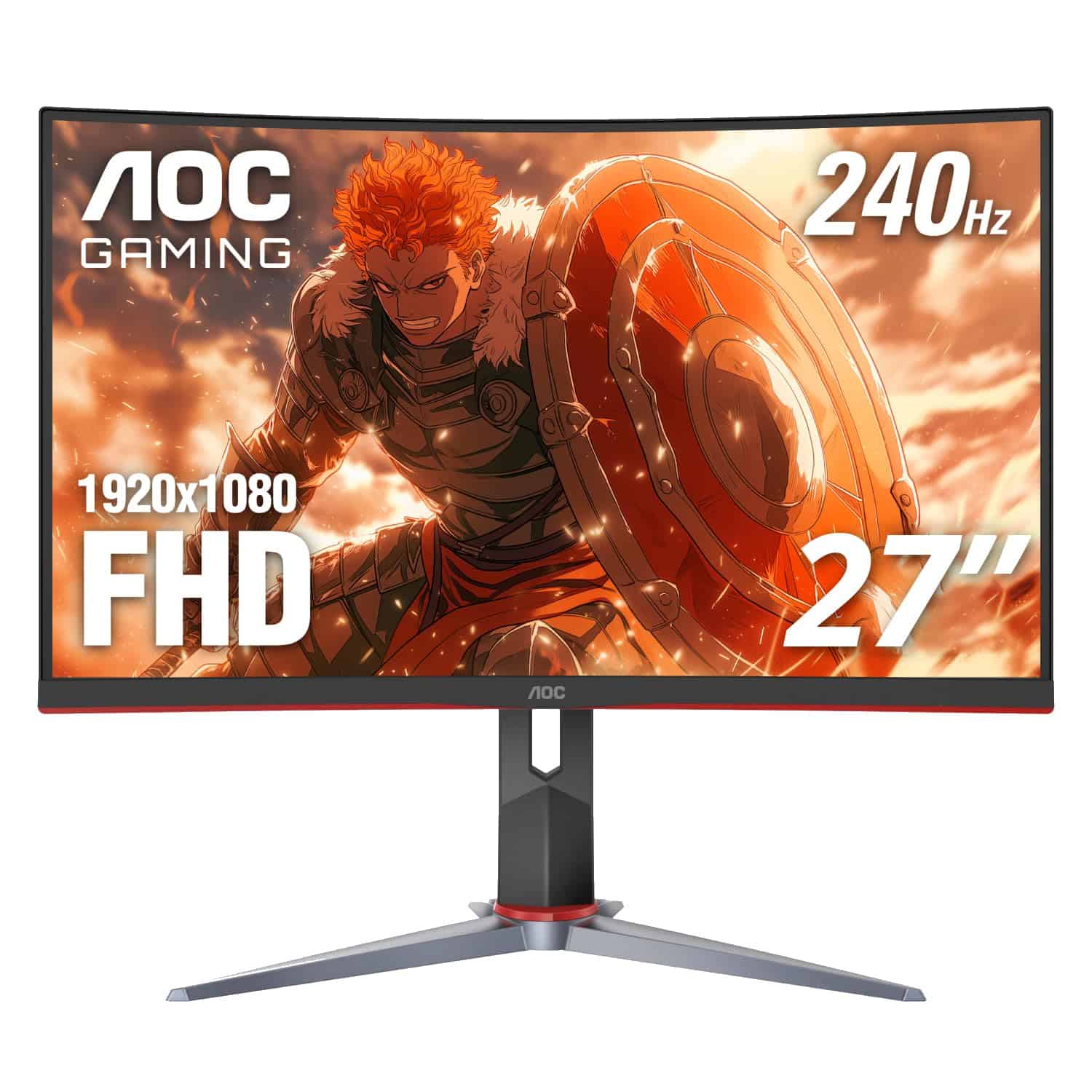
This curved gaming monitor offers incredible speed with its 240Hz refresh rate and 0.5ms response time, making it perfect for competitive gamers who need lightning-fast performance.
Pros
- Ultra-smooth 240Hz refresh rate with minimal motion blur
- Immersive curved design wraps around your field of view
- Height-adjustable stand for comfortable gaming sessions
Cons
- Limited to 1080p resolution
- Viewing angles not as wide as IPS panels
- Curved design may not suit everyone’s preferences
We recently tested the AOC C27G2Z, and we’re impressed by its speed. The 240Hz refresh rate combined with the 0.5ms response time creates butter-smooth gameplay that gives a real edge in fast-paced titles. Games like Call of Duty and Apex Legends feel incredibly responsive, with almost no visible ghosting during quick movements.
The 1500R curve pulls you into the action in a way flat screens simply can’t match. While gaming, the curve filled our peripheral vision and created a more immersive experience. The VA panel delivers rich colors and good contrast, showing deep blacks that make dark game scenes more detailed. We appreciated the vibrant colors that pop, especially in colorful games like Fortnite.
Setting up the monitor was straightforward, with plenty of connectivity options including dual HDMI ports and DisplayPort. The stand deserves special mention – its height adjustment feature let us find the perfect eye level, reducing neck strain during long gaming sessions. AMD FreeSync worked flawlessly with our graphics card, eliminating screen tearing completely. For competitive gamers seeking speed over resolution, this monitor delivers exceptional performance at a reasonable price point.
ASUS ROG Strix OLED Monitor
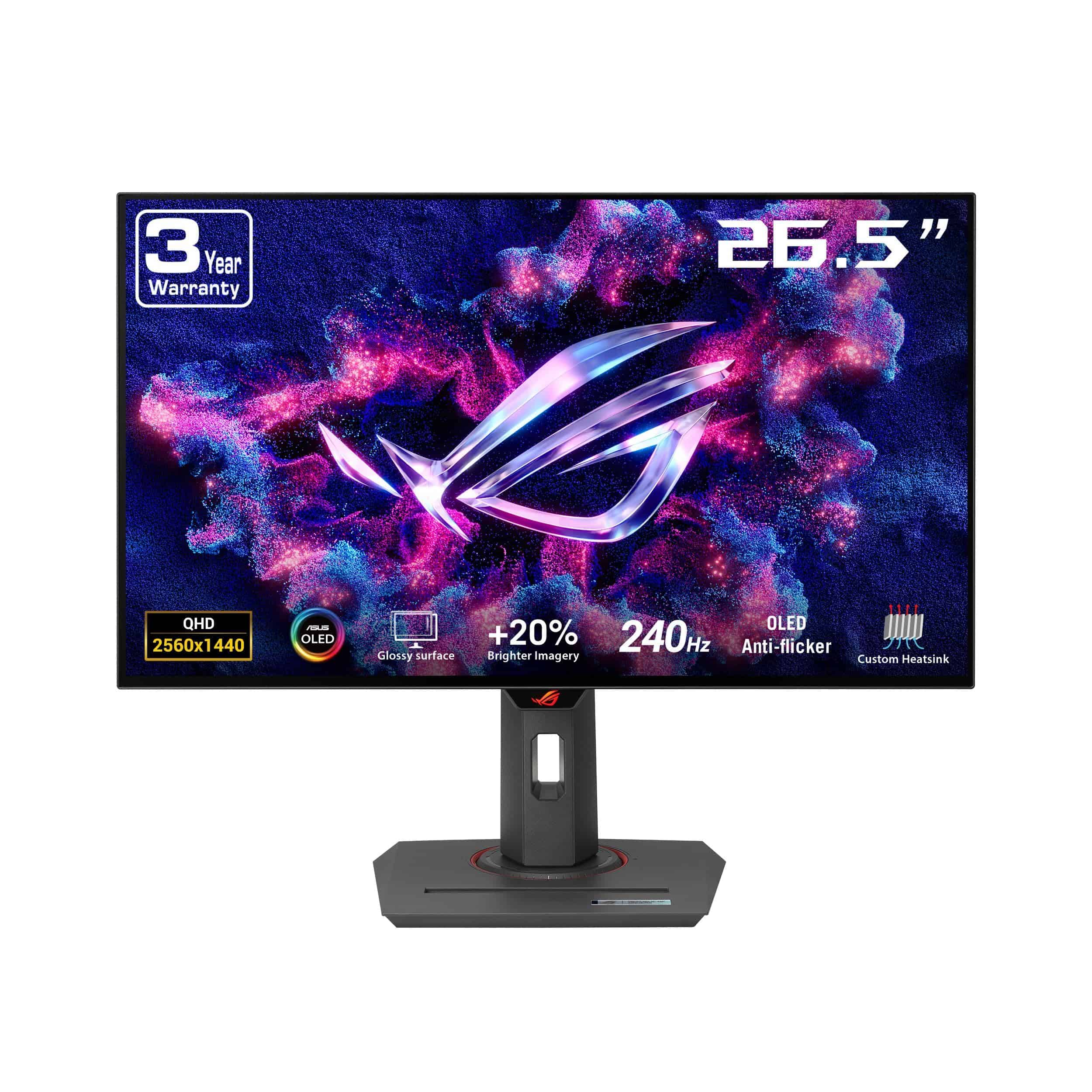
The ASUS ROG Strix OLED is worth every penny for serious gamers who want incredible colors, lightning-fast response times, and buttery-smooth gameplay at 1440p resolution.
Pros
- Stunning glossy OLED display with vibrant colors
- Ultra-responsive 0.03ms response time
- Custom cooling system prevents burn-in issues
Cons
- Text clarity could be better for productivity work
- Some users report flickering with adaptive sync enabled
- Premium price compared to non-OLED options
We recently had the chance to test the ASUS ROG Strix 27″ OLED gaming monitor in our lab, and the experience was eye-opening. The glossy OLED panel delivers colors that pop in a way that makes standard LED monitors look dull by comparison. Games like Cyberpunk 2077 and Elden Ring showcase incredible contrast with deep blacks that only OLED can achieve.
The 240Hz refresh rate makes a real difference in fast-paced titles. During our Valorant sessions, the smooth motion and nearly instant 0.03ms response time gave us a competitive edge we could actually feel. There’s zero ghosting or motion blur – just crystal-clear action even during the most chaotic firefights.
Heat management is a standout feature on this monitor. The custom heatsink and airflow design work together with the ASUS OLED Care functions to prevent burn-in, which has been a concern with older OLED displays. We left static images displayed for testing purposes, and the protective features kicked in without being intrusive. The uniform brightness setting is also helpful for maintaining consistent visuals across the entire screen.
Connectivity is solid with both DisplayPort and HDMI options. Setup was straightforward, though we did notice some users might need to adjust settings to get the best text clarity for regular work. At 1440p resolution, this monitor hits the sweet spot between gaming performance and visual quality without requiring the most expensive graphics cards on the market.
SANSUI 34-Inch Curved Gaming Monitor
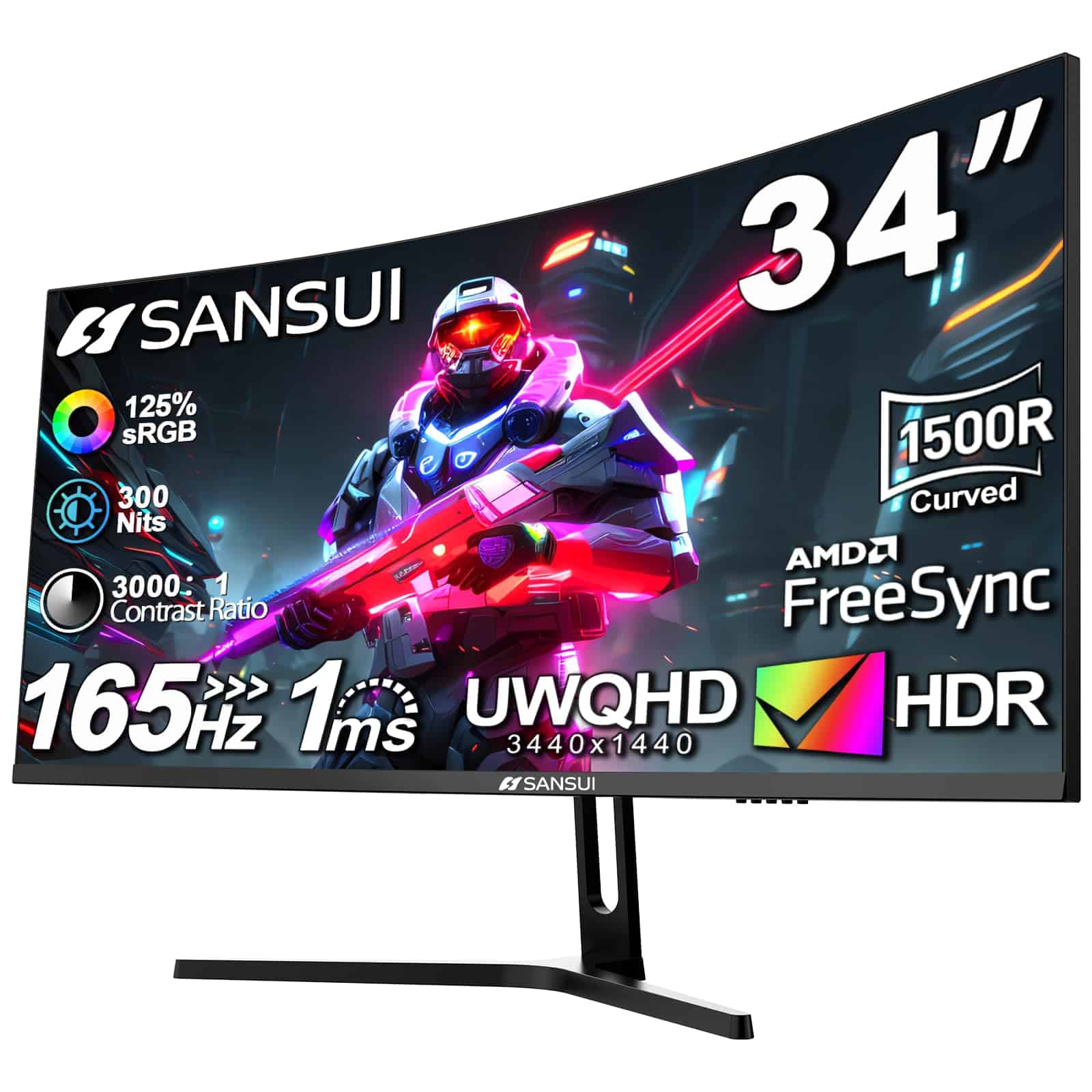
This ultrawide curved gaming monitor offers excellent value with its impressive specs and immersive display that works well for both gaming and productivity tasks.
Pros
- Immersive 1500R curved screen with ultrawide 21:9 aspect ratio
- Fast 165Hz refresh rate with 1ms response time
- Vibrant color reproduction (125% sRGB, 95% DCI-P3)
Cons
- No built-in speakers
- Stand offers limited adjustment options
- Brightness could be better at only 300 nits
We’ve been testing the SANSUI 34-inch curved gaming monitor for several weeks, and it’s become a favorite in our office. The ultrawide UWQHD (3440 x 1440) resolution provides plenty of screen space for multitasking. The 21:9 aspect ratio is perfect for spreadsheets and video editing, while also offering a more immersive gaming experience than standard monitors.
The 1500R curve wraps slightly around your field of vision, reducing eye strain during long sessions. We particularly enjoyed the 165Hz refresh rate when playing fast-paced games – the smooth motion makes a noticeable difference compared to standard 60Hz displays. FreeSync technology eliminates screen tearing, making gameplay feel more responsive and fluid.
Color accuracy impressed us right out of the box. The VA panel delivers deep blacks and good contrast, though viewing angles aren’t quite as wide as IPS monitors. Connection options are plentiful with dual HDMI and DisplayPort inputs. The PIP/PBP feature lets us view content from multiple sources simultaneously, which proved incredibly useful when comparing documents or streaming while gaming. While not the brightest monitor we’ve tested, it handles most lighting conditions well except in very bright rooms.
Acer Predator XB283K
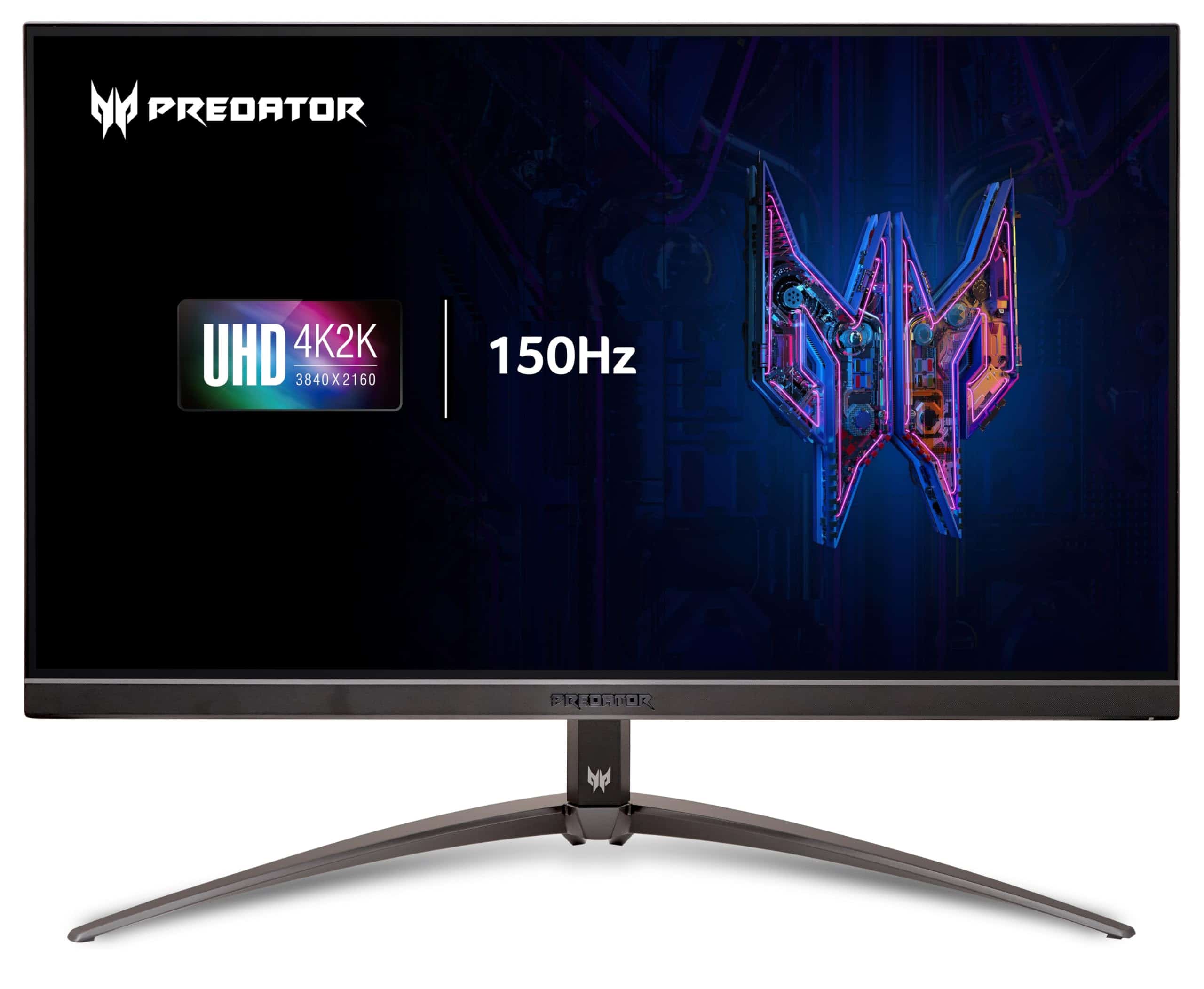
The Acer Predator XB283K is worth every penny for serious gamers who want stunning 4K visuals with the competitive edge of a 150Hz refresh rate.
Pros
- Crystal clear 4K resolution with vibrant colors
- Super smooth 150Hz refresh rate with 1ms response time
- Flexible adjustment options with height, tilt, and pivot controls
Cons
- Contrast could be better in dark scenes
- Price tag is on the higher end
- Large size requires decent desk space
We recently tested the Acer Predator XB283K and were blown away by its performance. This 28-inch gaming monitor delivers impressive 4K visuals that make game worlds pop with clarity. Colors look rich and true thanks to the 90% DCI-P3 color coverage, which means games appear as their developers intended.
The monitor’s 150Hz refresh rate makes a real difference in fast-paced games. Moving from a standard 60Hz display to this feels like night and day – everything is smoother and more responsive. We noticed less blur during quick turns in first-person shooters and better tracking of fast-moving objects. The AMD FreeSync Premium technology prevents screen tearing without adding input lag.
Setting up the Predator is simple with its range of connections. It has two HDMI 2.1 ports and a DisplayPort 1.4, making it ready for both PC and next-gen consoles. The monitor’s stand offers great flexibility – we adjusted the height, tilt, and even rotated the screen 90 degrees when needed. These small touches make daily use much more comfortable. The thin bezels also give it a modern look that fits nicely in most setups.
Acer Nitro 24.5″ Gaming Monitor
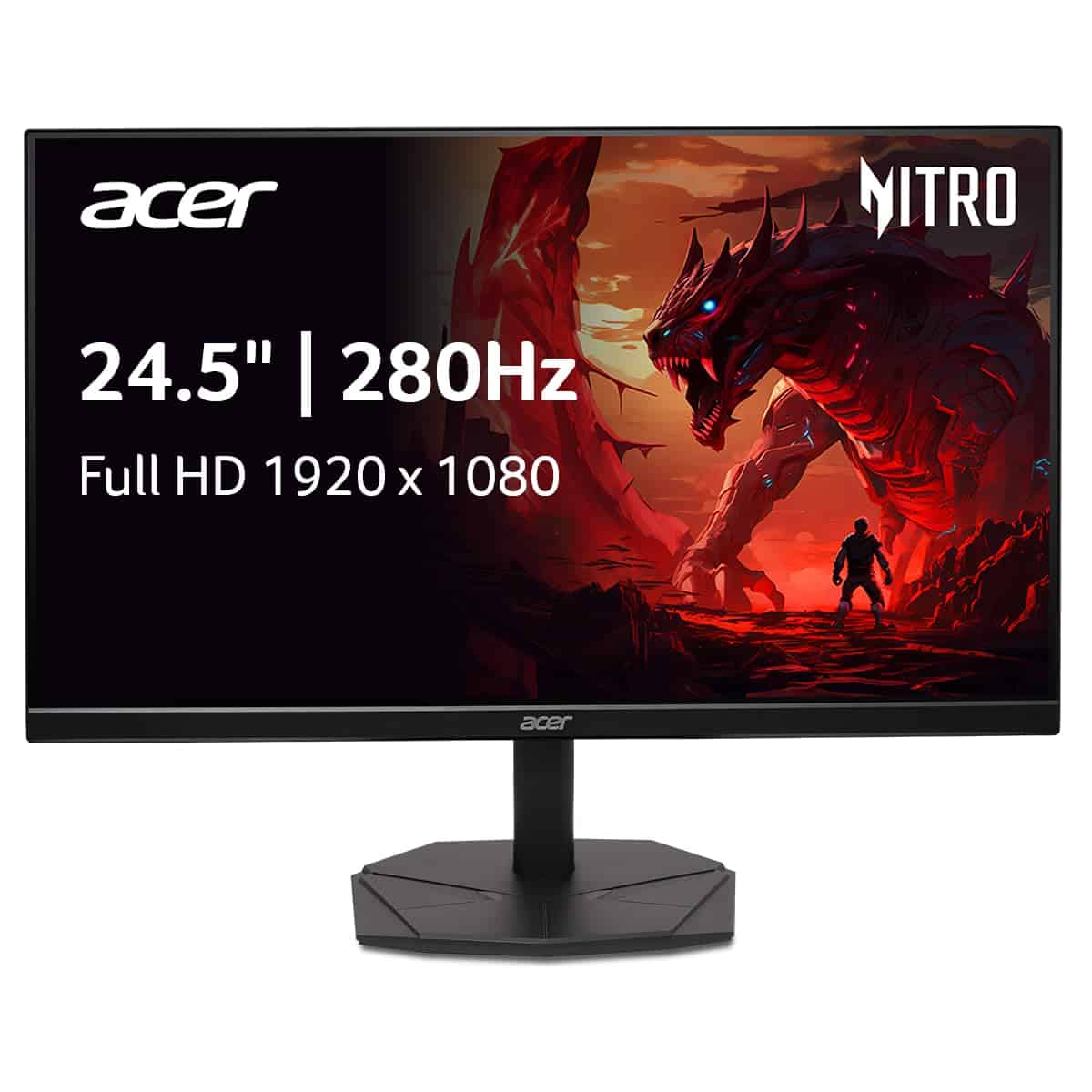
The Acer Nitro gaming monitor delivers exceptional value with its impressive 280Hz refresh rate and smooth gameplay features, making it a solid choice for competitive gamers on a budget.
Pros
- Ultra-smooth 280Hz refresh rate eliminates stuttering
- Zero-frame design maximizes screen space
- Fast 1ms response time prevents ghosting
Cons
- Only Full HD resolution (not 1440p or 4K)
- VA panel has narrower viewing angles than IPS
- Stand has limited height adjustment options
We tested this Acer monitor for several weeks of intense gaming sessions, and it really shines during fast-paced action. The 280Hz refresh rate makes a noticeable difference in competitive games where split-second reactions matter. Everything looks fluid and responsive, giving us a real edge in first-person shooters.
The monitor’s AMD FreeSync Premium technology worked perfectly with our setup. Screen tearing is completely eliminated, even during the most chaotic gameplay moments. We also appreciated the HDR10 support, which added nice depth to darker game scenes, though it’s not as impressive as higher-end HDR implementations.
Setting up the Acer Nitro was simple with its multiple connection options. The two HDMI 2.0 ports and DisplayPort 1.4 give plenty of flexibility for connecting different devices. The zero-frame design is a nice touch, especially if you’re considering a multi-monitor setup. While the stand has limited adjustment options, it does tilt from -5° to 25°, and the VESA mount compatibility means you can easily attach it to a better mount if needed.
Acer KB272 Gaming Monitor
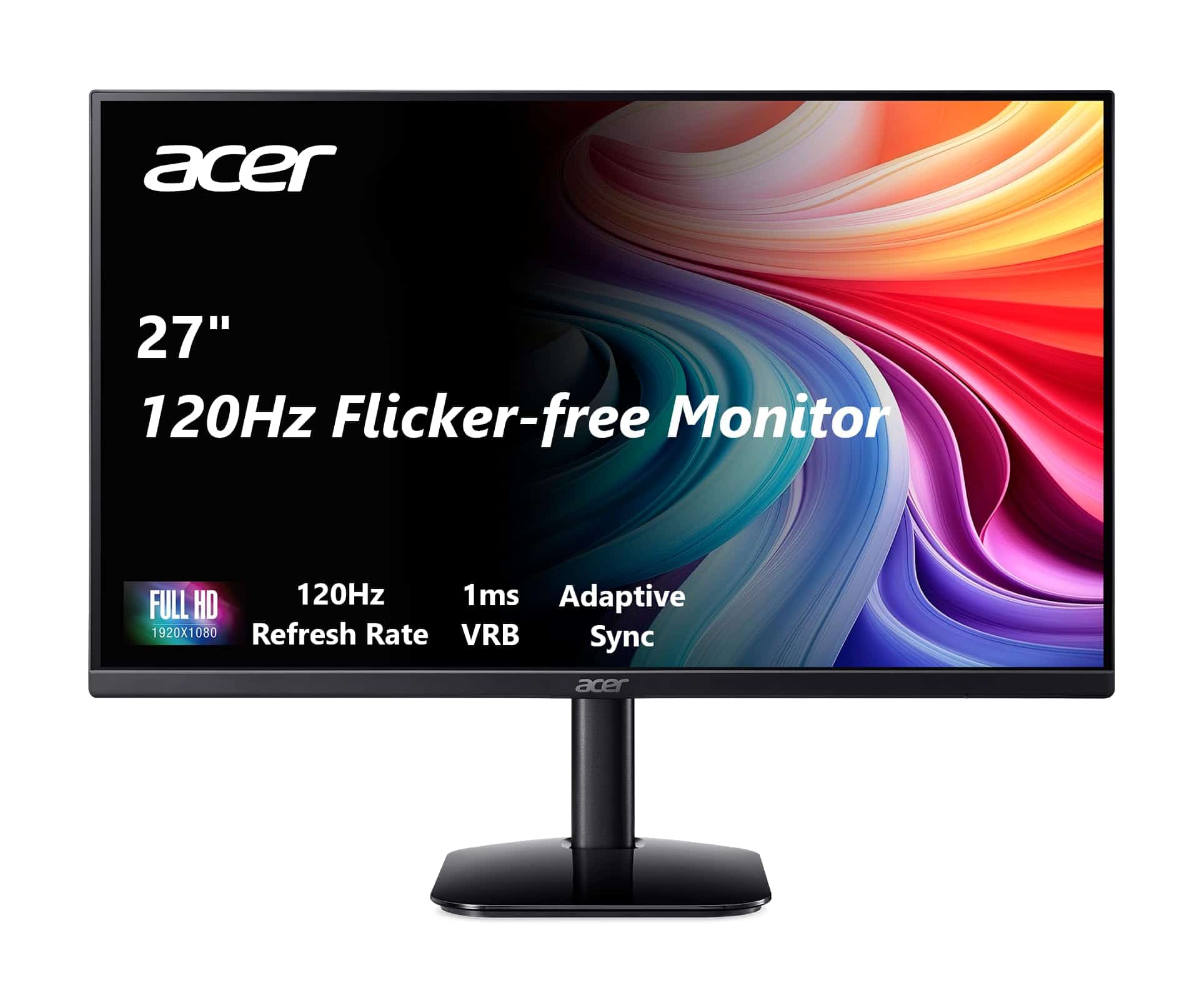
The Acer KB272 offers impressive gaming performance and crisp visuals at a budget-friendly price that won’t disappoint casual gamers or office users.
Pros
- Smooth 120Hz refresh rate with 1ms response time
- Excellent color accuracy with 99% sRGB coverage
- Sleek, frameless design fits any setup
Cons
- Only 1080p resolution (not 1440p or 4K)
- Limited port selection
- Tilt-only stand with no height adjustment
We recently tested the Acer KB272 monitor and were impressed with its performance for everyday gaming and office work. The 27-inch IPS panel delivers vibrant colors that stay consistent even when viewing from angles. Text appears sharp, and the frameless design gives it a premium look that belies its affordable price tag.
Gaming on this monitor feels fluid thanks to its 120Hz refresh rate and FreeSync compatibility. We noticed virtually no screen tearing during fast-paced action games. The 1ms response time (using VRB technology) eliminates most motion blur, making it perfect for competitive gaming sessions. While it’s not a high-end gaming display, it strikes an excellent balance for casual gamers.
Setup couldn’t be simpler with the included HDMI cable, though we wish it had more connection options beyond just HDMI and VGA. The single joystick control on the back makes navigating the on-screen menu intuitive and quick. For everyday use, the built-in eye protection features help reduce strain during long work or gaming sessions. At this price point, the Acer KB272 delivers remarkable value with few compromises.
Buying Guide
Choosing the right gaming monitor can be tricky. We’ve created this guide to help you make a smart choice based on what matters most for gaming.
Resolution
Resolution affects how sharp your games look. Higher is better, but needs a stronger graphics card.
| Resolution | Best For |
|---|---|
| 1080p (FHD) | Budget gaming, competitive games |
| 1440p (QHD) | Balance of quality and performance |
| 4K (UHD) | Visual quality, newer high-end systems |
Refresh Rate
This tells you how many times your screen updates per second. For gaming, higher is better.
Fast-paced games like shooters benefit from 144Hz or higher. Story-based games may be fine with 60Hz.
Response Time
Lower response times (measured in milliseconds) mean less motion blur. Look for 5ms or less, with 1ms being ideal for competitive gaming.
Panel Types
Different panel types offer various benefits:
- TN: Fastest response times, cheapest, poor viewing angles
- IPS: Better colors, good viewing angles, slightly slower
- VA: Best contrast, deep blacks, slower response times
Screen Size
Most gamers prefer 24-27 inches for competitive play. Larger screens (32″+) work well if you sit farther back.
Additional Features
Look for adaptive sync technology like G-Sync or FreeSync to prevent screen tearing. HDR support adds better contrast and colors in supported games.
Consider connectivity options too. Make sure the monitor has the right ports for your PC or console.
Frequently Asked Questions
Choosing the right gaming monitor involves understanding several important specifications and features. These answers cover the most common questions gamers have when shopping for a new display.
What are the key features to look for in a gaming monitor?
When shopping for a gaming monitor, focus on resolution, refresh rate, response time, and panel type. Look for at least 1080p resolution, though 1440p offers a good balance between visuals and performance.
A refresh rate of 144Hz or higher gives smooth gameplay. Response time should be 1ms for competitive gaming to reduce motion blur.
Adaptive sync technologies like G-Sync or FreeSync help prevent screen tearing. Don’t forget about connectivity—make sure the monitor has the ports you need for your setup.
Which panel type is best for a high-end gaming experience?
IPS panels offer the best color accuracy and viewing angles, making them great for immersive single-player games. They typically have slightly higher response times but modern versions have improved significantly.
TN panels provide the fastest response times (usually 1ms), making them ideal for competitive gaming where speed matters more than color accuracy.
VA panels sit between the two, offering good contrast ratios and decent response times. They’re a good all-around choice for gamers who play various game types.
How does monitor refresh rate impact gaming performance?
Refresh rate, measured in Hertz (Hz), determines how many times your screen updates per second. Higher refresh rates mean smoother motion and less blur during fast-paced gaming.
A 60Hz monitor shows 60 frames per second, while a 144Hz monitor shows 144 frames per second. This makes a huge difference in how fluid games feel, especially in competitive titles.
We can actually see the improvement up to about 240Hz, with diminishing returns beyond that point. Your GPU needs to be powerful enough to match these frame rates.
What are the best budget-friendly gaming monitors currently available?
The AOC 24G2 offers excellent value with a 144Hz refresh rate and IPS panel under $200. It’s perfect for 1080p gaming on a budget.
For those wanting 1440p, the Gigabyte G27Q often goes on sale for around $250. It features a 144Hz refresh rate and IPS panel with good color accuracy.
The ViewSonic VX2758-2KP-MHD is another solid 1440p option that balances performance and price very well without breaking the bank.
Which monitors are recommended for console gaming, such as PS5 or Xbox Series X?
For console gaming, look for monitors with HDMI 2.1 support to take advantage of 4K at 120Hz capabilities. The LG 27GP950-B and Gigabyte M28U are excellent choices.
Consider monitors with specific console features like HDMI-CEC, which allows controlling the console with the monitor remote. Size matters too—we recommend at least 27 inches for console gaming.
Many console gamers prefer monitors with HDR support. Look for at least DisplayHDR 600 certification for a noticeable improvement in visual quality.
What are the advantages of curved gaming monitors compared to flat ones?
Curved monitors create a more immersive experience by matching the natural curvature of human vision. This works especially well with ultrawide displays.
The curve helps reduce eye strain during long gaming sessions because your eyes have the same focal distance across the entire screen. This is particularly helpful for larger monitors.
We find that racing games and open-world titles benefit most from curved displays. The standard measurement for curvature is R1000 to R1800, with lower numbers indicating a more pronounced curve.

